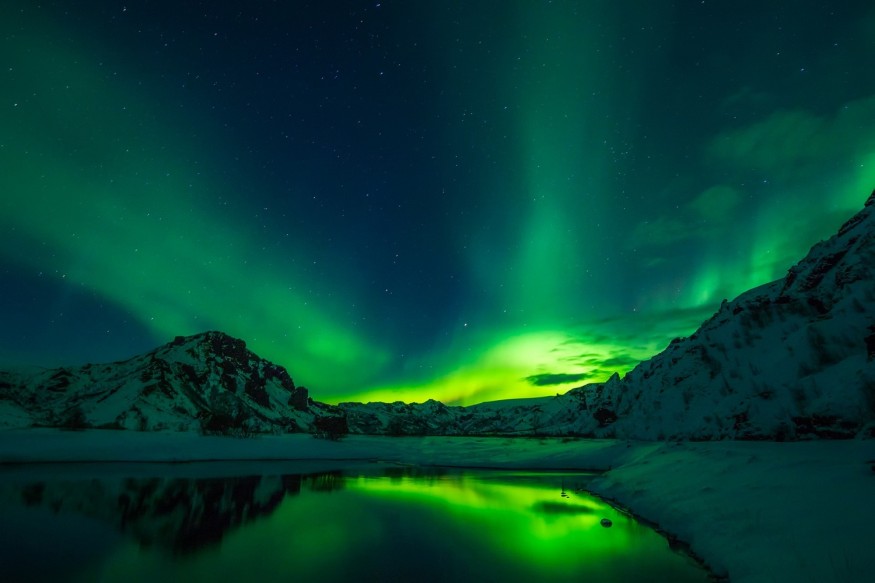Following a moderate solar outburst, NASA astronaut Bob Hines captured the aurora on camera from the International Space Station (ISS) on Aug. 17.
According to SpaceWeather.com, the northern lights were created when the sun hurled enough charged particles towards our planet to cause a moderate or G2-class storm.
Aurora Borealis Images Captured from Space
Hines shared in his tweet the photos of the aurora borealis he captured from the ISS.
"Absolutely spectacular aurora today!!!" he wrote in the caption.
He was also thankful for the recent solar activity resulting in these wonderful sights.
Absolutely SPECTACULAR aurora today!!! Thankful for the recent solar activity resulting in these wonderful sights! pic.twitter.com/aOD45XSWaX
— Bob “Farmer” Hines (@Astro_FarmerBob) August 18, 2022
Samantha Cristoforetti, a European Space Agency astronaut, tweeted about the aurora earlier this week.
"Those bright nights around the full Moon, you can see features on the planet surface even at night," she wrote in her post, adding that the view from the Cupola is upside down, which is flying above clouds feels like looking up at the sky from Earth.
In those bright nights around the full Moon you can see features on the planet surface even at night. From the Cupola the view is “upside down” - flying above clouds feels like looking up at the sky from Earth. Cloud gazing and stargazing at the same time! https://t.co/NyB2TQ7oIu pic.twitter.com/i7eXdO4RtE
— Samantha Cristoforetti (@AstroSamantha) August 16, 2022
Despite the amazing occasion allowing Hines and his fellow station residents to take in the aurora borealis, it is crucial to be aware of radiation from space weather and cosmic rays emitted from deep space. Fortunately, astronaut health is tracked before, during, and after space missions.
Aurora Borealis in the US
According to the National Oceanic and Atmospheric Administration, the Northern Lights may be visible in the United States this week due to a strong geomagnetic storm. The phenomenon, scientifically known as the aurora borealis, is more common near the North Pole, Alaska and Canada.
However, the storm may push the aurora lights further south on Thursday and Friday, and if weather conditions allow, they may be visible in parts of Pennsylvania, Iowa, and Oregon.
The beauty of auroras is that you don't need anything special to see them. While the aurora borealis is typically most visible at the poles, this geomagnetic storm will allow observers to see it across much of the northern United States.
What Happens During a Geomagnetic Storm?
A coronal hole, the black spot on the sun, causes high winds during a storm, which in turn causes coronal mass ejections (CME). A CME sends fragments of plasma and the solar magnetic field into the atmosphere.

Read also: Northern Lights 2021: Watch Aurora Borealis in United States on Halloween Weekend Due to Solar Flare
A strong geomagnetic watch will be in effect on Aug. 18 and 19 by the National Oceanic and Atmospheric Administration (NOAA) because of recent solar flares on the sun's surface, known as coronal mass ejections (CMEs), are expected to reach Earth's atmosphere. The storm began on Sunday and is expected to reach a G3 level on Thursday before ending on Friday. G5 is the storm's highest intensity measurement.
While many CMEs have been ejected from the sun, the NOAA reports that most are expected to have little to no impact on Earth. At least four have potential Earth-directed components.
Why Aurora Borealis Happen?
The northern lights occur when the sun sends a swarm of charged particles towards our planet, a process known as a coronal mass ejection. Because the particles have an electrical charge, they are drawn to the Earth's magnetic field.
As atmospheric molecules are excited by the electrical activity, bits of the sun flow along magnetic lines near our planet's poles and generate a glow. Solar storms on Earth are usually harmless, but strong bursts of space weather can cause infrastructure problems by shorting out power lines, satellites, or other machinery.
Check out more news and information on Space in Science Times.
© 2026 ScienceTimes.com All rights reserved. Do not reproduce without permission. The window to the world of Science Times.












